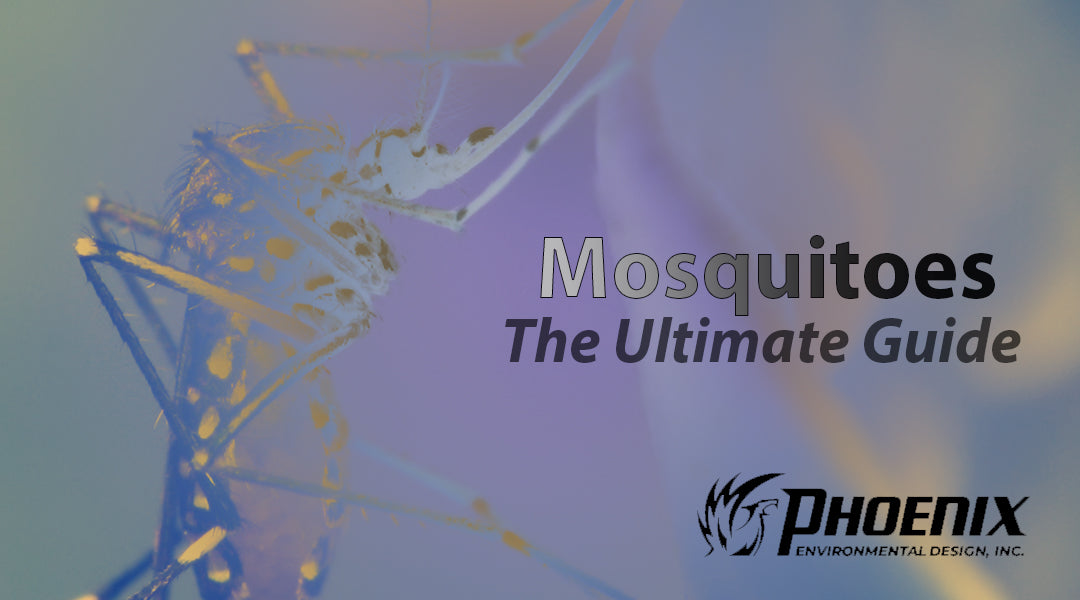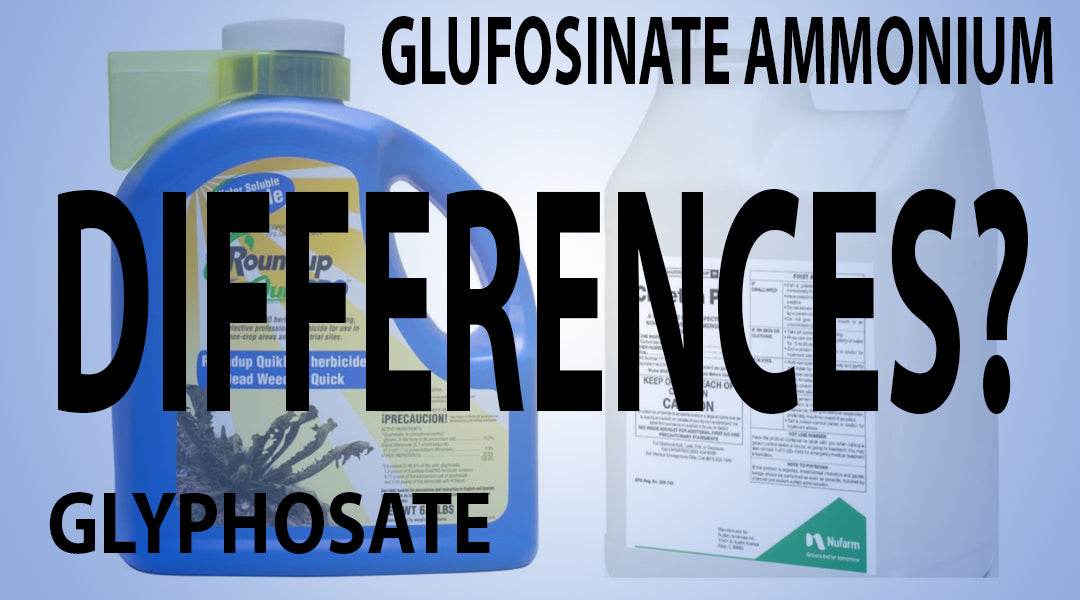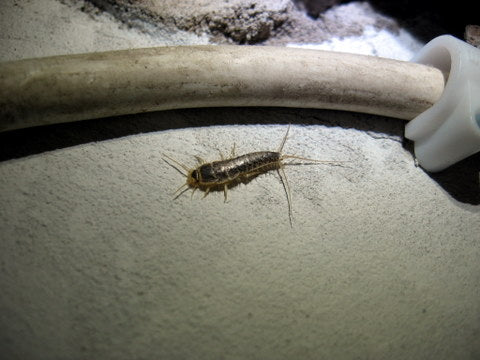What is Crabgrass?

Large crabgrass growing in mulch - Image from Cornell Uni.
Crabgrass is an annual weed and grows in residential and commercial lawns throughout the country. It sprawls across the ground alongside desirable grasses and competes for nutrients as it grows. Some crabgrass species can grow up to 36 inches in height if they're not mowed, making your lawn look terrible in just a few weeks. Crabgrass doesn't harm your lawn, but it does affect how it looks. If you desire lush, green grass in your yard, getting rid of crabgrass is the first step.
Where Does Crabgrass Grow?
This summertime weed starts to emerge in the spring and continues to grow until the fall. It produces numerous seeds and dies during the first frost of the season. It grows almost everywhere across the world and thrives in warmer areas such as the South. However, people can find crabgrass in their yards from Washington State to Maine and have a battle on their hands as they try to remove this hard-to-control weed.
Crabgrass is an opportunistic weed and grows best in wet areas and bare spots on your lawn. It thrives in wet conditions and requires a lot of sunlight for growth. It also grows well in areas with a high salt content. If you live in a state that has salt on the roads during the winter, vehicles will fling the salt onto your lawn and tree line. During the spring, you may see more crabgrass pop up in these areas. Aeration in the springtime will help to reduce the salt in the soil and prevent crabgrass germination.
Why Do I Have Crabgrass?
Even a well-maintained lawn can encounter crabgrass at some point. Birds may carry the seeds onto your lawn; the wind can also deposit crabgrass seeds throughout your property. A rainy spring will also produce optimal conditions for growth. If you have crabgrass in your yard, there are a few reasons why it popped up uninvited.
You mow the lawn too short.
Some people mow their lawn extremely short. However, having a short lawn isn't ideal if you want to prevent weed growth. Keeping the grass about 4 inches high not only looks pleasing but also prevents unwelcome crabgrass. Taller grass shades the soil and keeps this low-growing weed from receiving abundant sunlight. It's best to mow high from spring to fall and then to lower the blade in October if you want a short lawn. If you prefer to have a short lawn during the summer, consider treating your lawn for crabgrass beforehand or planting clover to shade the soil.
You water the lawn too frequently.
If there are hundreds of tiny crabgrass seeds on your property, the last thing that you should do is overwater the lawn. Some people run the sprinklers or use the hose to water the grass every day. You should only water your lawn once or maybe twice a week depending on the weather. Daily watering is a mistake and will only help the crabgrass seeds to sprout. When you water your lawn, apply only an inch of water per square foot. Refer to the recommended watering times and application amounts of your sprinkler system if you have one installed.
It rained more in the spring.
Rainy springs provide all the necessary moisture for crabgrass to grow and to thrive throughout the summer. If it rains more than usual, expect to see the crabgrass popping up shortly thereafter. A hot summer with plenty of sunshine will also benefit this weed and make it active when other grasses go dormant due to excessive heat and a lack of water. As your grass turns slightly brown, the crabgrass will be highly visible in clumps of light green blades. Though you can't control the weather, you can at least make sure to mow high during the rainy season.
The lawn has bare spots.
Crabgrass thrives in the sunlight, so it's easy to see why it grows so well in bare spots on lawns. Bare spots don't have grass there to shade the soil and to keep the weed from growing. Lawns develop bald spots for many different reasons, from turf-damaging pests to buried rocks and fertilizer burn. Even something as minor as bad sprinkler coverage can cause random bald spots in your yard. Seed the bald spots in the fall and the spring to minimize crabgrass growth in those areas.
Where Does Crabgrass Come From?
Nearly 60 different crabgrass species exist across the world and thrive in temperate and tropical climates. Some species have been grown as foraging grasses for livestock for thousands of years. In fact, the Red River species yields about 125 pounds of grass per acre every day in optimal conditions. According to research conducted by the University of Florida, grazing animals enjoy crabgrass and eat more of it, thus resulting in bigger, heavier livestock.
Crabgrass isn't just for animals; it's still grown as a cereal crop in some regions. The seeds are quite nutritious and used to make breads and porridge. In ancient China, farmers grew a type of crabgrass known as foxtail millet. When European immigrants came to the United States in the late 19th century, they brought many different seeds with them, including crabgrass. Some immigrants even favored crabgrass over wheat and cultivated it yearly.
However, this once-cultivated plant has now become a major weed. It grows in fields and residential lawns as well as on commercial landscapes, industrial sites and roadsides. It can be found in every state and thrives throughout the spring and summer months. Without proper weed control, this annual weed can take over yards and reduce your home's curbside appeal.
Crabgrass doesn't go away on it's own.
Now that you know a little bit about crabgrass, it's time to dive further into the subject and to learn how to identify it in your yard. Some people mistake crabgrass for other grassy weeds, so it's important to know how to spot crabgrass if you want to treat it correctly and to prevent it from spreading to other parts of your lawn.
How to Identify Crabgrass

A stalk of crabgrass - Image on Public Domain
Crabgrass is so common in people's yards that they often mistake it for regular grass. It looks like grass because it is a grass, but those who maintain their yards on a regular basis can see this weed sticking out like a sore thumb. As an annual grass, it emerges in the spring and blends in with the other grass in the vicinity. However, as it grows and spring turns to summer, crabgrass grows longer and spreads seeds. It sprawls outward and is easy to spot once you know what to look for in your lawn.
What Does Crabgrass Look Like?
Though crabgrass may look like regular grass, it has many different characteristics. For one, newly sprouted crabgrass isn't as dark green as your turf. In fact, young crabgrass appears lighter green in color. Even as it matures, it doesn't match the green color of the surrounding turf. Crabgrass turns a dark yet dull green as it gets longer and more established in your lawn. It also doesn't spread evenly over the ground like your grass does. Instead, it grows in clumps very low to the soil.
Another difference is the size of crabgrass leaves compared to regular grass blades. Crabgrass has broad leaves and is easier to identify on lawns with fine grass such as Kentucky bluegrass and creeping fescue. In addition, crabgrass doesn't always grow upward; it grows laterally across your lawn. The stems lay flat on the ground and extend outward like crab legs from the middle of the weed. When it comes to identifying crabgrass, there are two common species to look out for in your lawn, garden and landscaped areas.
Common Types of Crabgrass
Smooth and large crabgrass are the most common species that you'll encounter on your property. These annual grassy weeds spread by seed and invade everything from crop fields to plant nurseries. They both produce flower heads on branches that look similar to bermudagrass. It takes a careful eye to tell the difference between smooth and large crabgrass.
Smooth Crabgrass

Notice the sparse hairs on this smooth crabgrass. Image by Cornell Uni.
Smooth crabgrass gets its name from its smooth appearance and lack of hairs on the leaves; it may have sparse hairs near the auricle, an earlike projection at the base of the leaf. The stems grow upright and flat along the ground, branching out from the base. The leaves are flat and have a defined midvein. They measure about a quarter of an inch wide and 5 inches in length with pointed tips.
Smooth crabgrass is found mostly in lawns and begins flowering from September to November, and the flowers cluster together along tall branches. This weed also produces fruit called spikelets, which are shaped like footballs and have stalks with disklike tips. The spikelets only grow about 2.5 millimeters, or 1/10 of an inch, in length.
Large Crabgrass

Notice the many long hairs on this large crabgrass - Image by Cornell Uni.
Large crabgrass looks similar to smooth crabgrass. However, large crabgrass grows taller and has long hairs on the leaves and the sheathes. The mature plant has flat leaves with the same prominent midvein as smooth crabgrass. The leaves measure just over an inch to 8 inches in length. Some of the stems grow upward while others grow outward, creating quite a messy look in your yard as the plants age.
Large crabgrass is found primarily in agricultural sites and other areas like roadsides, ditches and fields. It's also found in lawns and landscaped areas, including residential gardens. The seedlings have a pale green color and resemble witchgrass but with shorter hairs on the leaves. The mature plants produce the same florets and spikelets that smooth crabgrass does.
Don't Mistake These Weeds for Crabgrass
Not every property will have crabgrass. However, some properties may have multiple grassy weeds. There are many different weeds that resemble crabgrass and grow in patches on lawns:
- Smooth bromegrass: This perennial has flat leaves and starts flowering in late spring. It has a characteristic M-shaped watermark on its leaves. It also grows between 15 and 30 inches high.
- Annual bluegrass: This annual grassy weed looks similar to crabgrass thanks to its flat leaves with pointed tips. It thrives in moist conditions and grows to about 8 inches in height.
- Tall Fescue: This perennial weed grows in clumps and is hard to treat without killing the neighboring turf. It's darker than crabgrass and survives all year long.
- Yellow foxtail: This annual grassy weed starts by growing parallel to the ground before rising upward as much as 4 feet. Though it looks like crabgrass as it grows, flowering yellow foxtail has long, pill-shaped flower heads with yellowish bristles extending outward.
- Bermudagrass: This perennial weed develops leaves with a deep green color in optimal conditions. It has side stems, but its leaves have tips in the shape of a canoe.
Why is Crabgrass Hard to Control?

Tiny crabgrass seeds - Photo by Olivia McCandless
It's difficult to control a grassy weed that produces up to 150,000 seeds during its lifetime. A single crabgrass plant grows as many as 700 stems and matures all summer long. Controlling crabgrass comes down to timing. If you're too late, the crabgrass will grow and spread seeds all over your property. Targeting the crabgrass before it emerges from the soil is the best way to keep it from spreading and ruining your lawn.
However, you can still take control of the crabgrass situation after it has matured; it will just take a little more manual labor and the proper chemical treatments. Late fall and winter also help with the problem, killing the crabgrass and making it start over from seed the following spring.
Killing crabgrass isn't as hard as you think.
Once you've identified crabgrass in your yard, the next step is to eliminate it once and for all. Though you could wait for cold winter temperatures to kill this weed, waiting doesn't do much good if you want your lawn to look its best during the spring and the summer. With the right herbicides and some routine maintenance, you can remove crabgrass from your yard and keep it from coming back.
How to Kill Crabgrass the Right Way

Overgrown large crabgrass in a yard
Anyone can go around pulling weeds in their yard. However, you'll see the same person pulling even more weeds a few weeks or months later. Getting rid of weeds like crabgrass takes more than pulling them out of the soil. You have to take care not to spread the seeds around while removing them. Some people add crabgrass to their composts, which will only spread the seeds and cause more weed infestations.
There are a few different methods for eliminating crabgrass manually without the need to use chemicals. If you combine all the methods, you'll achieve better results in the end. Though nothing beats using herbicides for killing crabgrass, it's possible to remove unsightly weeds using your own two hands.
Tools for Removing Crabgrass in Lawns
Whether you're pulling weeds out by hand or applying herbicides, you'll need a few tools to get started. Do-it-yourself weed control is already hard enough. Don't make it any harder by not having the right equipment for the job. You'll save a lot of time and frustration in the end. Some of the required tools for getting rid of crabgrass include:
- A broadcast spreader for laying down granules
- A hand sprayer for applying liquid herbicide
- Safety glasses for protecting your eyes
- A hoe or a similar tool for digging out crabgrass
For severe crabgrass infestations, you may have to take drastic measures by removing both the turf and the crabgrass. If that's the case, you'll need new grass seed and a nonselective herbicide to kill all the plants in the target area. We'll discuss nonselective herbicides and their use later in this section.
How to Remove Crabgrass Without Chemicals

Use a tool to dig out the crabgrass.
Locate the crabgrass in your yard, and use a hoe to dig it up. You'll need to do this before the seeds appear. Otherwise, you'll risk spreading the seeds to other parts of your lawn and having an even bigger problem on your hands. Once you've pulled out the weeds, dispose of them in a plastic trash bag, or burn them in a fire pit to prevent spreading the seeds.
Pour boiling water on the crabgrass.
Boiling water kills crabgrass on the spot, but it'll take a steady hand to apply the water to the weed. If you get the boiling water on your turf, it'll also kill the good grass. Only use this step if the crabgrass sits alone in what used to be a bald spot and away from beneficial grass and plants.
Sprinkle corn gluten meal on the crabgrass.
Corn gluten meal does wonders at stopping crabgrass seeds from germinating. It's an established treatment for preventing many different weeds from taking over lawns. It also provides your lawn with ample nitrogen for growth. However, corn gluten meal will also prevent your grass seeds from germinating, so don't use it if you've recently filled in bare spots with grass seeds.
Getting Rid of Crabgrass With Chemicals
Aircraft spraying the field - Image from NZ Civil Aircraft Blog
Sheer manpower alone won't help to remove crabgrass that has spread its seeds in a yard. Herbicide treatments will take care of the problem when all other methods fail. Herbicides are a type of pesticide that targets undesirable plants such as crabgrass, dandelion and poison ivy. However, not all herbicides work the same. Whereas some products target the weeds alone, others kill all plant life in the area, including beneficial plants and grass.
Herbicides may contain one or several ingredients to target and to eliminate the crabgrass. Some products also work alongside fertilizers to help feed the lawn while preventing crabgrass seeds from germinating, such as herbicides containing the active ingredient prodiamine. Herbicides are used often in farming and help to prevent weeds from taking over and ruining crops. They're also used for residential and commercial applications, keeping crabgrass and other weeds off pristine lawns and landscapes.
Types of Crabgrass Herbicides
There are four primary categories of herbicides: selective, nonselective, pre-emergent and postemergent. Each one combats crabgrass and other weeds with specific chemical ingredients. They also come in different types such as granules and liquids. Understanding how these different herbicides work goes a long way to treating the problem without causing harm to your grass.
Selective Herbicides
Selective herbicides target specific weeds such as crabgrass. They're called selective because they kill a select group of weeds without harming other plants and grass. They're mostly used to control broadleaf weeds on lawns. However, crabgrass belongs to a category of weeds with narrow leaves. Look for products containing the active ingredient dithiopyr, which works on both broadleaf weeds and crabgrass before they emerge from the soil.
Nonselective Herbicides
Nonselective herbicides don't target a select group; they target all the plant life in the area. They're used to kill every weed as well as the grass throughout the entire landscape. Though it sounds extreme, sometimes a lawn has so many weeds that killing the plants and reseeding the lawn is the only viable option. Many nonselective herbicides contain diquat and target postemergent weeds.
Pre-emergent Herbicides
A pre-emergent herbicide targets crabgrass and other weeds before they emerge from the soil. It stops the seeds from germinating and can be applied to a lawn without causing any harmful side effects. Of course, you'll want to apply pre-emergent herbicides according to the label to prevent accidental overuse.
Postemergent Herbicides
Postemergent herbicides kill crabgrass, dandelion, foxtails and other nuisance weeds after they emerge from the soil. They work best on young weeds and contain ingredients that disrupt their growth, causing the plants to die within 36 hours. These herbicides are ideal for killing weeds that emerge from cracks in the driveway and throughout the lawn.
Some of the Best Crabgrass Killers at Pedchem

We have numerous herbicides here at Pedchem, all of which help to keep your lawn clear of invasive weeds such as crabgrass. The following list is only a fraction of the many herbicides we carry. However, these products will provide you with the power to stop weeds from germinating and to kill weeds after they've popped up on your lawn.
- Alligare Prodiamine 65WDG: This product contains the active ingredient prodiamine and is used for pre-emergent weed control. It works to prevent germination from a variety of weeds such as crabgrass, witchgrass and foxtails. Alligare Prodiamine 65WDG comes in a granular form and is easy to mix in water for applying in the target area.
- Dimension 2EW: This pre-emergent herbicide also provides postemergent crabgrass control thanks to the active ingredient dithiopyr. It's labeled for use on commercial and recreational sites such as sod farms and golf courses. Dimension 2EW is a liquid-based formula and helps to stop weed growth without harming nontarget plants.
- Tenacity Herbicide: This total weed killer provides selective control of crabgrass and other invasive weeds. It's a pre-emergent and a postemergent solution for targeting crabgrass on lawns, athletic fields, commercial landscapes and other target areas. Tenacity Herbicide can be applied before and after weeds emerge from the soil, providing you with an all-in-one solution for stopping weeds in their tracks.
- Pendulum 2G: This pre-emergent herbicide comes in easy-to-mix granules and works to prevent seed germination on home lawns, commercial landscapes and sod farms. It contains pendimethalin, a potent chemical that prevents both the shoots and the roots from growing. It can be mixed with water and applied on driveways, athletic fields and more to stop weeds before they pop up unexpectedly.
- Pendulum 3.3EC: This herbicide belongs to the Pendulum line of herbicides and targets crabgrass and other common weeds. Pendulum 3.3EC contains the same ingredient as Pendulum 2G but comes in a liquid form for quick application with a sprayer.
When to Apply Crabgrass Herbicides
The best time to treat a lawn for crabgrass is before the weed shows up. It's all about timing and applying pre-emergent herbicides before the seeds germinate. Young plants begin to emerge in May and continue popping up in June. Therefore, it's best to apply pre-emergent herbicides in early March and April. You'll also want to water and to mow the lawn prior to the application. If you apply the pre-emergent in rainy conditions, it could wash the herbicide away.
If you see weeds in your yard, use a postemergent herbicide to target them directly. Spray the herbicide on the plant, making sure to follow the directions for use closely. Drift and runoff can affect other plants in the area, especially if you're using a nonselective herbicide with potent ingredients.
Treating crabgrass isn't enough.
Just because you've removed crabgrass from your property doesn't mean that it will stay away for good. Prevention is the key to stopping this weed from re-emerging next year. With some regular maintenance, you can have a lush, green lawn without ever having to worry about another crabgrass infestation.
How to Prevent Crabgrass in Your Yard
Springtime not only brings your grass to life but also the trees and the flowers. As the temperatures rise, your landscape becomes more vibrant and green. Unfortunately, weeds will also show up as spring turns to summer and the temperatures climb higher and higher. If you see weeds emerge in early spring, you've got a different weed problem on your hands. Crabgrass doesn't really get going until late spring and early summer. You have to act quickly once it shows up, or else you'll have a lot of work on your hands until it dies in late fall or early winter.
Maintaining a Healthy Lawn
Preventing crabgrass is the ultimate goal as the spring season comes near. It grows quickly during the warm summer and produces thousands of tiny seeds. Though crabgrass dies in the winter, the seeds will remain dormant in the soil and germinate next spring. If you don't want to deal with another crabgrass infestation next year, it's best to take advantage of our preventative tips.
6 Tips to Prevent Crabgrass
Plant the right grass in your yard.
Thin grass with bare spots not only looks terrible but also makes the ideal location for crabgrass. This weed requires abundant sunshine, and thin grass won't provide enough soil shade to block the light. Crabgrass will sprout easily in bare spots, so it's best to seed these areas before crabgrass takes over. Planting the right grass for your yard will help to prevent weeds from sprouting. If you have a shady lawn, consider planting grass seed that easily takes root in those conditions. If you have children and pets, plant a grass seed that withstands heavy foot traffic. The right grass will grow thick, look healthy and prevent crabgrass from rooting.
Be careful about watering.
You should water your lawn on a regular basis, but take care not to overwater the yard. Crabgrass does well in both moist and parched lawns, so use enough water to keep your grass healthy. The healthier the grass, the more it will grow and block out crabgrass and other low-lying weeds.
Mow consistently and frequently.
Keeping your grass mowed at the proper height will help to prevent crabgrass seeds from germinating. Mow the grass at a height of 4 inches to keep your lawn looking thick and healthy. This height will also help the grass to shade the soil and to stop the seeds from receiving the necessary sunlight for growth. Mow at least once a week, keeping the grass at the same length every time. The turf should be as thick and tall as possible to prevent crabgrass. Four inches is tall enough to make the grass look fuller while stopping unnecessary seed germination.
Fertilize your lawn once a year.
Grass requires a few different minerals for proper growth, such as nitrogen, potassium and phosphorus. These ingredients are found in fertilizers and help to create a thicker, stronger and healthier lawn. You should fertilize your yard at least once a year. Healthy grass produces a strong root system, which will choke out unwanted weeds. If the grass is thick and full, the weeds won't have a space in which to grow and to spread in the yard. Always follow the directions for use on any fertilizer container. If you apply fertilizer the wrong way or with the incorrect amounts, you could permanently damage your grass.
Dethatch and aerate your lawn.
Thatch builds up over time in a lawn and suffocates the grass. If you dethatch and aerate the soil, you'll make it easier for the grass roots and the blades to receive water and nutrients, including more sunlight and air. Making your grass as strong and healthy as possible is one of the best ways to fight crabgrass now and in the future.
Use pre-emergent herbicides at the right time.
It pays to use pre-emergent herbicides before crabgrass shows up on your property. Crabgrass may die out every winter, but it will re-emerge once warmer spring temperatures move into the area. The seeds sit undisturbed below the soil and germinate in May. Using a pre-emergent herbicide will target the seeds and stop them from germinating and maturing. If you do see a young crabgrass plant emerging from the soil, pluck it right away. Otherwise, it will produce thousands of seeds and start the process all over again.
To Mulch or Not to Mulch?
The problem with crabgrass isn't getting rid of it. The problem is dealing with the seeds that are left behind. If you've recently picked crabgrass out of the soil, consider laying down a thin layer of mulch in the area. The mulch will cast shade over the soil and prevent the seeds from receiving sunlight. However, don't weigh down the spot with mulch. It will compact the area and prevent crabgrass seeds from germinating, including your desired grass.
Getting Rid of Crabgrass Once and for All

Smooth crabgrass stalk - Image by Grant Thompson
You don't have to deal with crabgrass year after year. Following these guidelines will give you a crabgrass-free lawn with just a little work on your part:
- Apply pre-emergent granules with a spreader around driveways and walkways.
- Pull out emerging crabgrass plants as soon as you spot them in your yard.
- Lightly spray young crabgrass with a postemergent herbicide to prevent the weed from producing seeds.
- Reseed damaged and thin areas where crabgrass could take root and cause problems during spring and summer.
You can't be afraid to kill certain patches of your lawn and to start over in areas where it's impossible to treat crabgrass. Using a nonselective herbicide will kill the weeds and the grass, giving you a clean slate for reseeding. You should perform this step if you only have a small percentage of desirable grass in your yard.
Get Rid of Crabgrass With Pedchem
With the right know-how and some helpful pre-emergent and postemergent herbicides, you can fight stubborn crabgrass and keep it off your lawn for good. Pedchem has an entire inventory of herbicides that will help to rescue your lawn from weeds. No matter if you're taking preventative or curative measures, we have what you need to produce a green, healthy and weed-free lawn.







Leave a comment (all fields required)